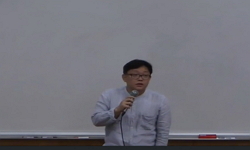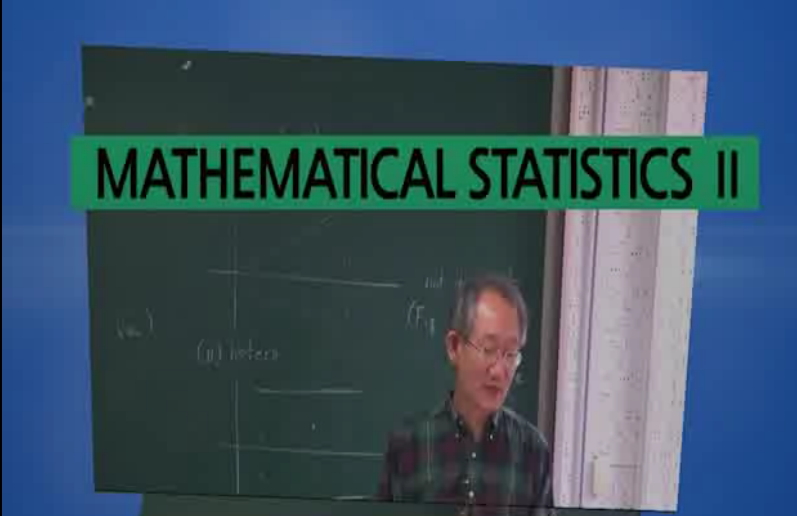비압축성 점성 흐름을 수치해석하기 위한 효율적인 대각행렬화된 근사 인수분해(DAF) 알고리즘을 개발하였다. 압력에 근거한 인공압축성(AC) 기법을 이용하여 3차원 정상 비압축성 Navier-Stokes ...
http://chineseinput.net/에서 pinyin(병음)방식으로 중국어를 변환할 수 있습니다.
변환된 중국어를 복사하여 사용하시면 됩니다.
- 中文 을 입력하시려면 zhongwen을 입력하시고 space를누르시면됩니다.
- 北京 을 입력하시려면 beijing을 입력하시고 space를 누르시면 됩니다.

대각행렬화된 근사 인수분해 기법을 이용한 3차원 비압축성 점성 흐름 해석 = Diagonalized Approximate Factorization Method for 3D Incompressible Viscous Flows
한글로보기https://www.riss.kr/link?id=A82625371
- 저자
- 발행기관
- 학술지명
- 권호사항
-
발행연도
2011
-
작성언어
Korean
- 주제어
-
KDC
531
-
등재정보
KCI등재
-
자료형태
학술저널
- 발행기관 URL
-
수록면
293-303(11쪽)
-
KCI 피인용횟수
0
- 제공처
- 소장기관
-
0
상세조회 -
0
다운로드
부가정보
국문 초록 (Abstract)
비압축성 점성 흐름을 수치해석하기 위한 효율적인 대각행렬화된 근사 인수분해(DAF) 알고리즘을 개발하였다. 압력에 근거한 인공압축성(AC) 기법을 이용하여 3차원 정상 비압축성 Navier-Stokes 방정식을 계산한다. AC 형태로 변형된 지배방정식은 2차 정확도의 유한차분법을 이용하여 공간에 대해서 이산화하였다. 이산화된 방정식계를 2차 정확도로 분할하기 위해서 본 연구에서 개발한 DAF 기법을 적용한다. 이 연구의 목적은 이 DAF 기법의 계산상 효율성을 검토하는 것이다. 만곡부를 갖는 사각형 덕트에서 완전히 발달한 층류 흐름과 발달하는 층류흐름 그리고 공동에서의 층류흐름에 대한 DAF 기법의 해석결과를 잘 알려진 4단계 Runge-Kutta(RK4)기법에 의한 해석해와 상대적으로 비교평가 하였다. 공간에 대해서 동일한 이산화기법을 이용하므로 동일한 격자상에서 계산된 DAF기법과 RK4기법의 해는 근본적으로 통일한 반면에, 이들 두 기법의 계산상 효율성은 확연히 다른 것으로 나타났다. 본 연구에서 개발된 DAF기법은 적용한 모든 흐름 문제에 대해서 RK4기법에 비해 최소 2배 이상 적은 계산 시간만을 필요로 하는 것으로 나타났다. 이러한 DAF 기법의 계산상 효율성은 계산용량의 추가나 프로그래밍의 추가적인 복잡함이 없이 확보된다.
다국어 초록 (Multilingual Abstract)
An efficient diagonalized approximate factorization algorithm (OAF) is developed for the solution of three-dimensional incompressible viscous flows. The pressure-based, artificial compressibility (AC) method is used for calculating steady incompressib...
An efficient diagonalized approximate factorization algorithm (OAF) is developed for the solution of three-dimensional incompressible viscous flows. The pressure-based, artificial compressibility (AC) method is used for calculating steady incompressible Navier-Stokes equations. The AC form of the governing equations is discretized in space using a second-order-accurate finite volume method. The present DAF method is applied to derive a second-order accurate splitting of the discrete system of equations. The primary objective of this study is to investigate the computational efficiency of the present DAF method. The solutions of the DAF method are evaluated relative to those of well-known four-stage Runge-Kutta (RK4) method for fully developed and developing laminar flows in curved square ducts and a laminar flow in a cavity. While converged solutions obtained by DAF and RK4 methods on the same computational meshes are essentially identical because of employing the same discrete schemes in space, both algorithms shows significant discrepancy in the computing efficiency. The results reveal that the DAF method requires substantially at least two times less computational time than RK4 to solve all applied flow fields. The increase in computational efficiency of the DAF methods is achieved with no increase in computational resources and coding complexity.
목차 (Table of Contents)
- Abstract
- 요지
- 1. 서론
- 2. 지배방정식
- 3. 수치기법
- Abstract
- 요지
- 1. 서론
- 2. 지배방정식
- 3. 수치기법
- 4. 적용
- 5. 결론
- 감사의 글
- 참고문헌
참고문헌 (Reference)
1 Haelterman, R, "generalization of the Runge-Kutta iteration" 224 (224): 152-167, 2009
2 White, F.M, "Viscous Fluid Flow" McGraw-Hill Science, New York 2005
3 Tang, H.S, "Three-dimensional numerical modeling of initial mixing of thermal discharges at real-life configurations" 134 (134): 1210-1224, 2008
4 Rogers, S, "Steady and unsteady solutions of the incompressible Navier-Stokes equations" 29 (29): 603-610, 1991
5 Khangaonkar, T, "Simulation of hydrodynamics at stratified reservoirs using a staged modeling approach" SI52 : 79-86, 2008
6 Prasad, A.K, "Reynolds number and endwall effects on a lid-driven cavity flow" 1 (1): 208-218, 1989
7 Paik, J., "Numerical simulation of swirling flow in a complex hydro-turbine draft tube using unsteady statistical turbulence models" 131 (131): 441-456, 2005
8 Jameson, A, "Numerical Solutions of the Euler Equations by Finite Volume Methods Using Runge–Kutta Time-Stepping Schemes"
9 Brandt, A, "Multilevel adaptive computations in fluid dynamics" 18 (18): 1165-1172, 1980
10 Jameson, A, "Multigrid algorithms for compressible flow calculations" Princeton University, NJ 1986
1 Haelterman, R, "generalization of the Runge-Kutta iteration" 224 (224): 152-167, 2009
2 White, F.M, "Viscous Fluid Flow" McGraw-Hill Science, New York 2005
3 Tang, H.S, "Three-dimensional numerical modeling of initial mixing of thermal discharges at real-life configurations" 134 (134): 1210-1224, 2008
4 Rogers, S, "Steady and unsteady solutions of the incompressible Navier-Stokes equations" 29 (29): 603-610, 1991
5 Khangaonkar, T, "Simulation of hydrodynamics at stratified reservoirs using a staged modeling approach" SI52 : 79-86, 2008
6 Prasad, A.K, "Reynolds number and endwall effects on a lid-driven cavity flow" 1 (1): 208-218, 1989
7 Paik, J., "Numerical simulation of swirling flow in a complex hydro-turbine draft tube using unsteady statistical turbulence models" 131 (131): 441-456, 2005
8 Jameson, A, "Numerical Solutions of the Euler Equations by Finite Volume Methods Using Runge–Kutta Time-Stepping Schemes"
9 Brandt, A, "Multilevel adaptive computations in fluid dynamics" 18 (18): 1165-1172, 1980
10 Jameson, A, "Multigrid algorithms for compressible flow calculations" Princeton University, NJ 1986
11 Humphrey, J.A.C, "Laminar flow in a square duct of strong curvature" 83 : 509-527, 1977
12 Yang, J.Y., "Implicit weighted ENO schemes for three-dimensional incompressible Navier-Stokes equations" 146 : 464-487, 1998
13 Ekaterinaris, J.A, "High-order accurate numerical solutions of incompressible flows with the artificial compressibility method" 45 (45): 1187-1207, 2004
14 Govindan, T. R, "General three dimensional viscous primary/secondary flow analysis" 29 : 361-370, 1991
15 Taylor, A.M.K.P, "Curved ducts with strong secondary motion: Velocity measurements of developing laminar and turbulent flow" 104 : 350-359, 1982
16 Swanson, R.C, "Convergence acceleration of Runge-Kutta schemes for solving the Navier-Stokes equations" 224 (224): 365-388, 2007
17 Tamamidis, P, "Comparison of pressure-based and artificial compressibility methods for solving 3D steady incompressible viscous flows" 124 : 1-13, 1996
18 Rogers, S, "Comparison of implicit schemes for the incompressible Navier-Stokes equations" 33 : 2066-2072, 1995
19 Paik, J, "Coherent structure dynamics in turbulent flows past in-stream structures: some insights gained via numerical simulation" 136 (136): 981-993, 2010
20 Lin, F.B, "Assessment of artificial dissipation models for three-dimensional incompressible flow solutions" 119 (119): 331-340, 1997
21 Dukowicz, J.K, "Approximate Factorization as a high order splitting for the implicit incompressible flow equations" 102 : 336-347, 1992
22 Merkle, C.L, "Application of Runge-Kutta schemes to incompressible flows" AIAA 1986
23 Briley, W.R, "An overview and generalization of implicit Navier-Stokes algorithms and approximate factorization" 30 (30): 807-828, 2001
24 Beam, R, "An implicit scheme for the compressible Navier Stokes equations" 16 (16): 393-402, 1978
25 Chorin, A, "A numerical method for solving incompressible viscous flow problems" 2 : 12-26, 1967
26 Sotiropoulos, F., "A computational comparison of two incompressible Navier-Stokes solvers in three-dimensional laminar flows" 23 (23): 627-646, 1994
동일학술지(권/호) 다른 논문
-
- 대한토목학회
- 양정석(Yang Jeong-Seok)
- 2011
- KCI등재
-
용수과부족지수(WEDI)를 이용한 사회경제학적 가뭄평가
- 대한토목학회
- 유지영(Yoo Ji Young)
- 2011
- KCI등재
-
- 대한토목학회
- 박창열(Park Changyeol)
- 2011
- KCI등재
-
- 대한토목학회
- 손광익(Son Kwang Ik)
- 2011
- KCI등재




 ScienceON
ScienceON DBpia
DBpia








